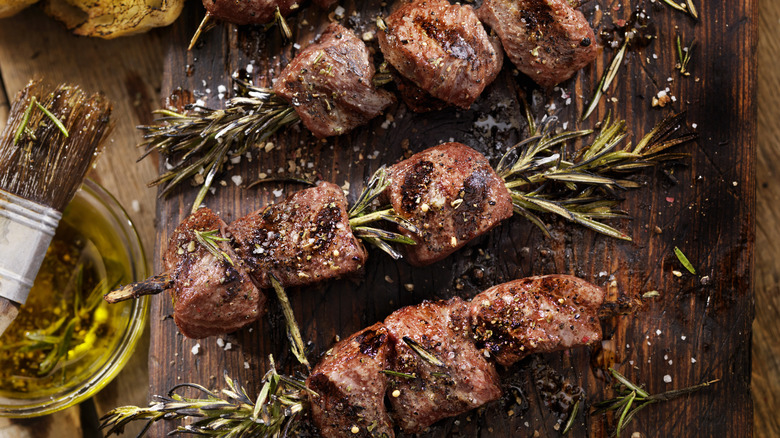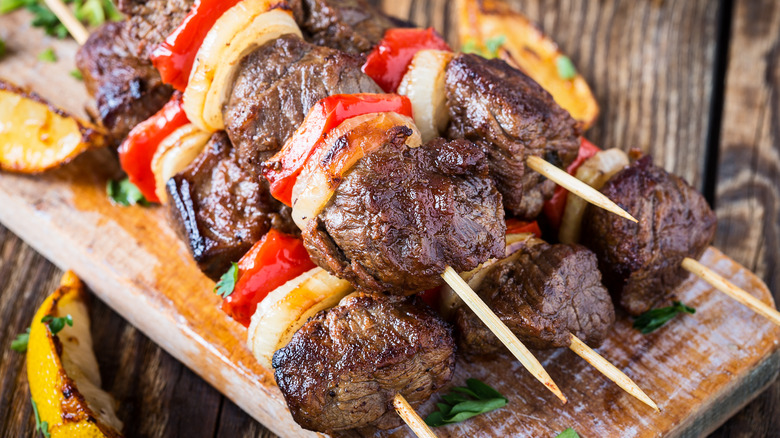Steak Kabobs Are The Easy Way To Stretch A Cut Of Beef
Steak can be expensive, so it's natural to want to stretch the cut you have to feed everyone. One simple way to maximize your steak is to make them into kabobs. Some cuts are better than others for kabobs, but really whatever you have on hand will do. Cutting the steaks into chunks and threading them onto skewers — especially if you also add vegetables — will make your beef go much further. Making the most of the meat you have also allows for extra creativity in planning your meal, letting you play with seasonings, produce pairings, and different flavors easily.
By adding vegetables to the steak, kabobs increase the volume of food without requiring a large quantity of meat. This also adds nutritional variety to the meal, and food on skewers is often kid-approved, making it easier to get kids excited about eating their veggies. The visual appeal of kabobs makes the dish look plentiful and appetizing, so that everyone feels like they get a satisfying portion. Additionally, because the steak is cut into smaller pieces, it cooks faster and more evenly, reducing the cooking time — though of course you'll need some extra time for prep.
How to make your steak into kabobs
There are tons of ways to season or marinade your steak for kabobs, so choosing your favorite blends is your first step. For a Middle Eastern twist complete with delicious dipping sauce, try this shish kabob and haydari recipe, which calls for a flavorful combo of spices and olive oil, lemon juice, and honey for the marinade. Be sure to cut your meat into chunks that are roughly the same size and do the same for your vegetables. As for the veggies, you can choose pretty much whatever you'd like (or have on hand), though you'll want to ensure nothing too delicate goes on the grill. Popular options include zucchini and other squash, onion, peppers, and tomatoes. You can also add fruit for a sweet and savory combo — pineapple, grapes, and figs are common. When assembling the skewers, you may want to follow this tip for grilling kabobs — cook the meat and veggies separately. This is because vegetables cook faster, and having them on the same skewer as the meat can lead to charring.
After you have grilled the kabobs, it's time to enjoy them. Continuing the theme of stretching the cut of meat you have, serve them alongside rice, tabbouleh, couscous, pita, or green, pasta, or potato salad. Consider serving dips or sauces, too — haydari, hummus, tzatziki, and chimichurri are all pair beautifully. You'll have a tasty, full meal with plenty for everyone.

